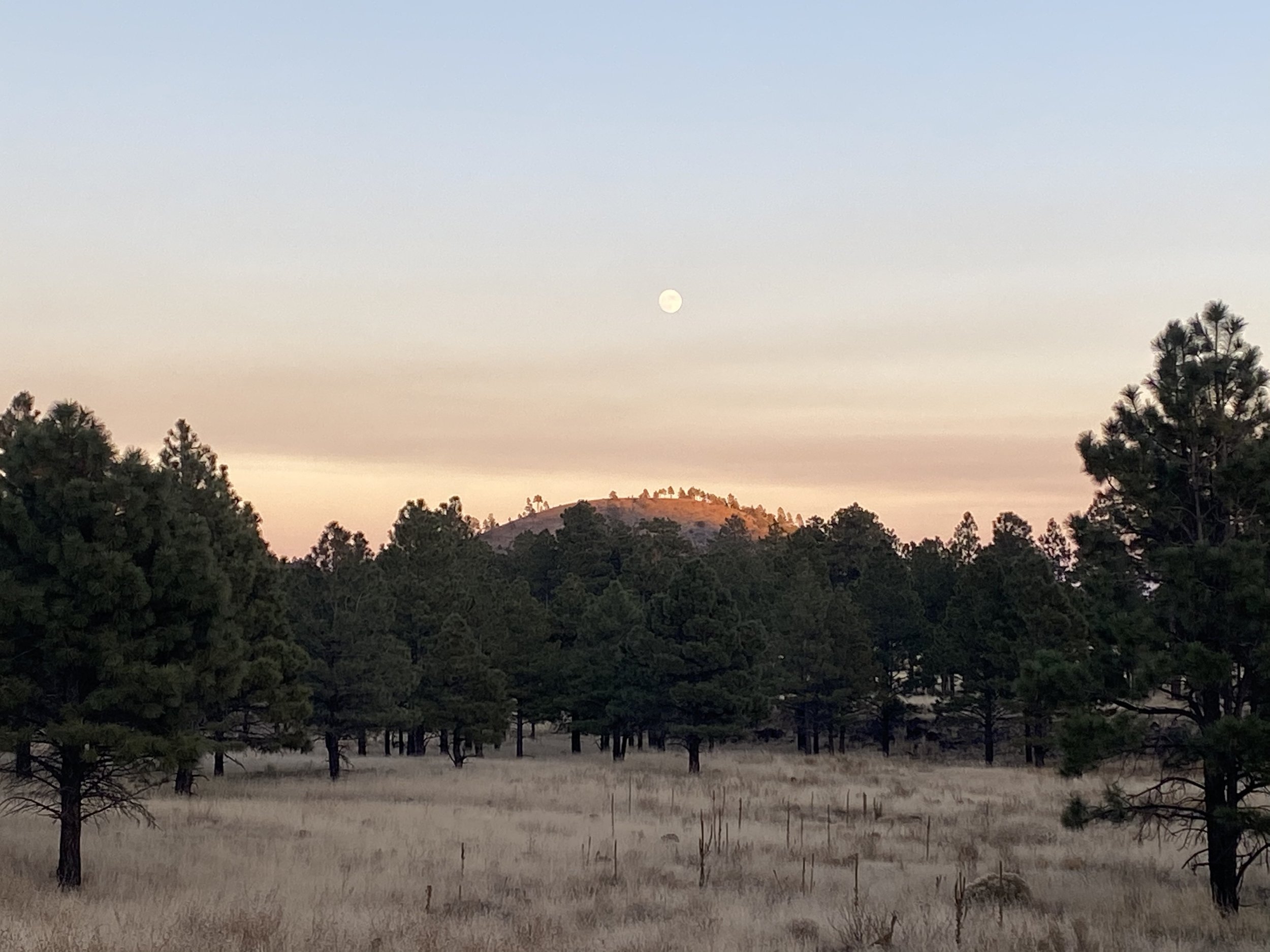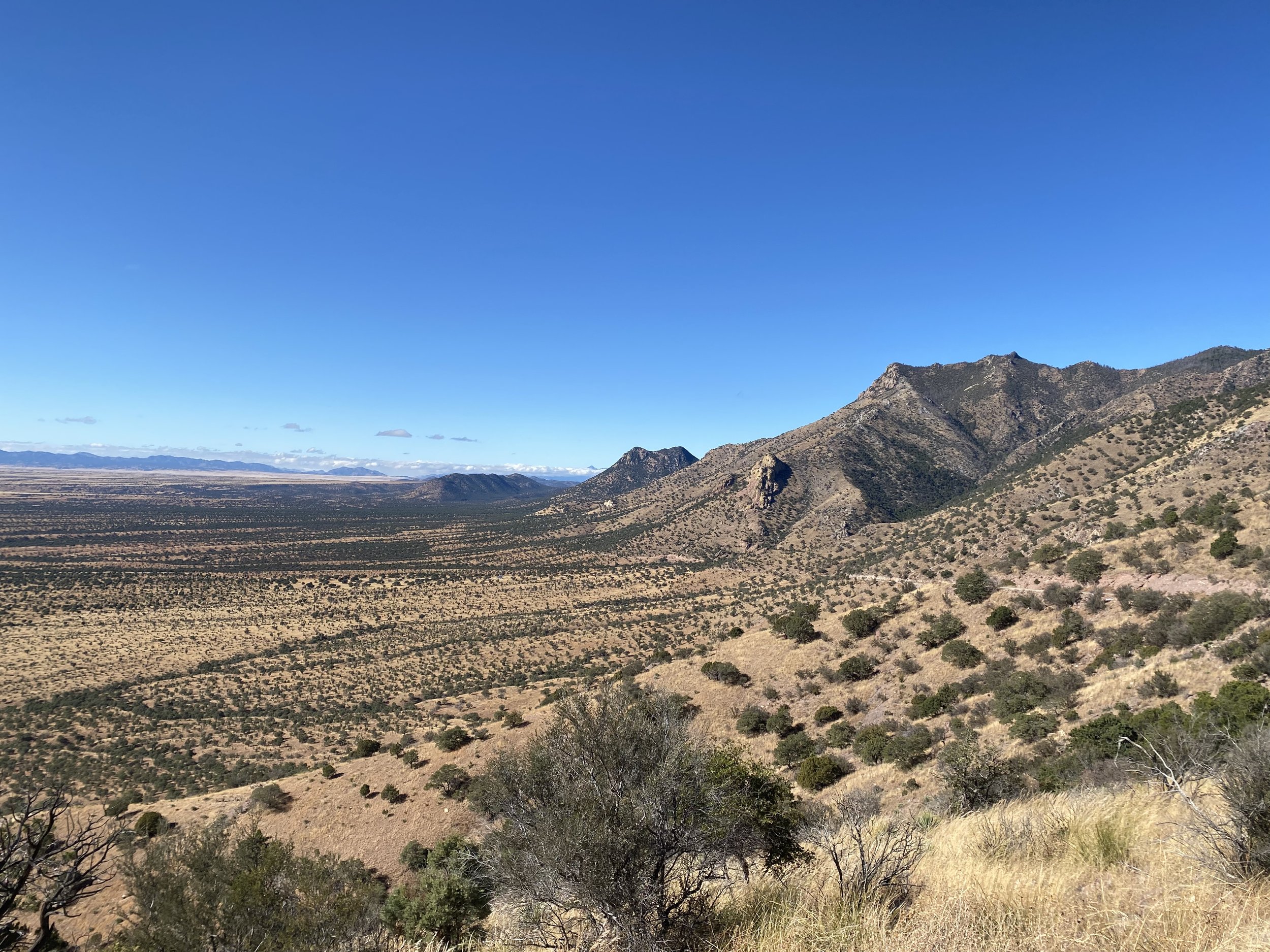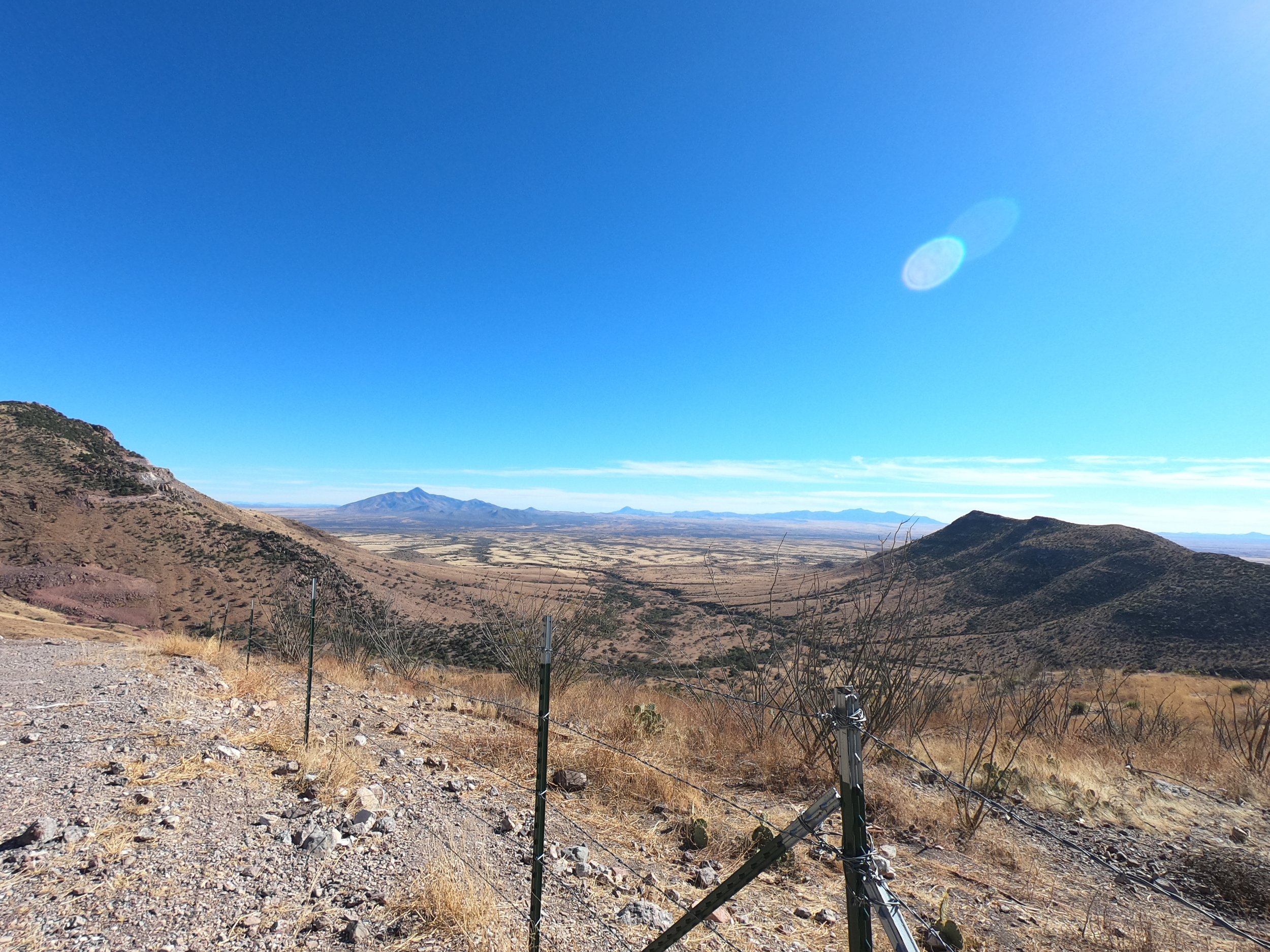Hitting a Wall: Reflecting on the Arizona Trail 1 Year Later
As I re-watch the footage from my southbound Arizona Trail thru-hike, I am filled with longing for another extended walk. I miss the loneliness, blisters and fear of the unknown, as much as I miss the breathtaking desert sunrises, twisted saguaros, and myriad birds. I feel homesick for the constant movement; my feet itch to pound across hundreds of miles of earth.
I’ve never missed thru-hiking like this before…
Mostly because I’ve never had the opportunity to. Last year was the first year I didn’t attempt a long trail, since my thru-hike of the Appalachian Trail in 2017.
My year was full of beautiful, much shorter adventures, though, the biggest of which was guiding my first She Treks backpacking trip and sharing my passion for lightweight travel with 3 other women.
Now that winter has fully descended upon us at 8,900ft in Crested Butte, CO, I have made a point to work on my 2021 Arizona Trail movie.
I spent the last week sorting through 2hrs of GoPro footage, distilling it to an essential length of less than 30 minutes.
At first the task made me irritable; I couldn’t remember what went where, as all my videos became wildly jumbled when I uploaded them to my computer.
I put Mica Mountain North of Mt. Lemmon, and pre-North Rim clips mistakenly tucked very near the end of the series. My head ached—did the highway crossing for Payson come before the Mazatzal Wilderness Area? After Four Peaks? Or somewhere in between…
After some reflection, I realized my frustration stemmed from my want to be walking, not watching...
I watched myself feel homesick, feel tired, feel overwhelmed, and I watched myself embrace and overcome those adversities in order to reach the Mexico border after 35 days of walking.
At some point I accepted that I was here—behind my computer—splicing, reordering, and telling a story, not out there on the trail living it; I settled into the task.
I hiked in the off-season, beginning at the UT/AZ border on November 11th and finishing at “The Wall” on December 15th—a despairing end to such an awe-inspiring experience.
When I saw the laser-straight, iron obstruction, ending abruptly at the AZT monument, all I could think was, “What a joke” and, “will the marker be concealed by it one day, too?”
As comical and out of place as the corrugated-metal division looked to me, I knew it symbolized something much graver than two kids drawing a line in the sandbox.
The wall is very serious for the “7,500 migrants [since 1999] from Mexico, El Salvador, Honduras, Guatemala and beyond… [who] have died on the US-Mexico border” in their desperate attempt to flee even more desperate situations (6).
As Americans, we’ve been told how to feel about the people attempting to migrate to the US from Central & South America, and Mexico. Our government leaders have told us to feel afraid of them, to be angry, and to feel defensive of our country.
The people migrating north have been reduced to “Illegals”; they have been dehumanized to the point where we no longer picture them as people trying to matriculate legally into our country, instead, we imagine invaders & bandits cheating the system, sneaking across the border in droves.
Donald Trump warned us in 2016, “When Mexico sends its people, they’re not sending their best. […] They’re sending people that have lots of problems, and they’re bringing those problems with us. They’re bringing drugs. They’re bringing crime. They’re rapists. And some, I assume, are good people” (4).
Not to mention his syntax, what Trump really failed to address was, as far as the evils of drugs and rape go, the devil is already in the walls.
But why shine a light on the fact that “more than 760,000 people have died since 1999 from a drug overdose… [and] nearly 75% of drug overdose deaths in 2020 involved an opioid” (1). To make matters more bleak, according the CDC, 1 in 4 people prescribed opioids by a physician become addicted to them, and “in 2016, more than 11.5 million Americans reported misusing prescription opioids in the past year” (3).
It is easier to unite people against an external threat, though, than it is to fight the beast within, especially when that beast is worth 1.42 trillion US Dollars.
And what about the supposed “Mexican rapists”?
Let’s consider actual FBI statistics regarding the ethnicity of rapists already within the United States. Of the 18,806 people who were arrested for rape in 2016, 12,571 were white, 5,412 were black or African American, and 1,374 were Hispanic or Latino (5).
As someone who was raped—not once, but twice—I am more concerned with the rapists already in the US—the ones who got away with rape because of their social status or family name, than I am with the potentially fabricated rapists who are quite possibly dying in the desert at this very moment on some remote 50,000 acre swath of land in Texas.
It is easy to conjure Donald Trump when speaking about our southern border, but The Wall isn’t just his. Its construction began in the 1980’s and it was known as the Mexico-United States Barrier. The Department of Homeland Security stated that “In May 2011… it had 649 miles (1,044 km) of barriers in place” and only an additional 52 miles of barriers were built during Donald Trump’s presidency (7).
Fun fact: I walked a longer distance than all the sporadic segments of the US/Mexico barrier combined.
The more pressing issue to address, though, is why so many people are dying on the US/Mexico Border.
“… Experts believe that federal immigration policies have exacerbated the tragedy, forcing migrants into ever-more perilous crossings, and leading refugee journeys – fleeing violence, persecution and climate disaster – to an anguished dead end” (6). Most deceased migrants die from heatstroke and dehydration, and their bodies are never found in the blisteringly empty swath of desert between us and Mexico (6).
When people are turned away from the border, they are sent back to Mexico and “for extended periods [placed] in makeshift camps, where they are often denied basic healthcare and face violence, rape, murder and kidnappings by organized crime groups“ (6).
Smugglers (Coyotes) take advantage of migrants’ desperation in these camps, charging exorbitant fees and promising them safe crossing, but their lies lead to devastating outcomes. “In June, 53 immigrants, mostly from Mexico, were found dead inside of a sweltering tractor trailer on the outskirts of San Antonio, Texas, in what was the nation’s deadliest smuggling incident along the US-Mexico border to date” (6).
The death toll is likely far greater than 7,500, as the Brooks County Sherif’s office in TX, for example, estimates it only finds 1 out of every 5 bodies (6).
What sort of people make up the 7,500+ bodies found in the desert along our southerly border?
The saddest bit of truth is that these people, for the most part, were daughters, mothers, husbands, teenagers, kids, laborers—people like Jair (19) and Yovani (16), who were determined to get out of their impoverished village and make a new life for themselves in San Antonio, TX.
Both boys ended up dead in the back of that tractor trailer, so close to their final destination but ultimately robbed of any chance to flourish.
Why talk about the devastation at the border? What does it have to do with thru-hiking?
First of all, if there is anything walking thousands of miles has taught me, it is that everything is connected.
And second, well, I can’t stop thinking about The Wall and what it means on a broader scale.
I can’t stop thinking about how I had every advantage when it came to walking 788miles across the desert; I had the best gear, access to every sustaining resource. I can’t stop thinking about how my whiteness gave me the confidence to reach through the barbed wire fence and touch the monument a hairs breath across an imaginary border delineating us from them.
Every person deserves a fighting chance, and most people migrating from Central & South America, and Mexico, want to do it legally, but our immigration policies and systems are, quite frankly, a convoluted nightmare.
We’ve all had a taste of desperation, right? We’ve prayed over an unrequited love, begged the Universe to finally bestow upon us our dream job or opportunity, wept over a terminal diagnosis, yearned for the perfect burger at the end of 85 mile stretch of grueling trail—small or big, we’ve all been desperate.
But have any of us known a desperation so great that it would drive us to travel blindly across some of the most inhospitable terrain on earth without a pack on our back and no trail to follow?
I do not believe anyone in there right mind would venture into the Sonoran Desert without a true idea of where they were going or how they would survive, unless they literally had no other choice.
When I think about the AZT, I’m thinking about how my journey ended at a wall where so many people’s began.
For me, hitting the wall meant it was time to go home, to return to Crested Butte and to the people who love me. For the people who’s journeys were only just beginning, it symbolized the ultimate unknown, that they were unwanted and unwelcome, it meant walking hundreds more miles in the heat and oppressive dryness without any support, across a sharp, unrelenting landscape until they found a place to rest, alive or dead.
I found a filthy red checkered blanket half buried in sand, not 70 miles from the Mexico border.
I saw the blanket shortly after I came upon a golden eagle—its wingspan rivaling my own—arched gracefully over the body of an eviscerated calf.
I could’ve reached out and touched its rich, dark feathers, I was so close.
When it launched gracefully into the air with a single wing beat, I was left alone with the calf’s small, hollowed-out corpse, and the knowledge that the desert is a place of graceless efficiency.
There are no second chances here.
SOURCES:
Digital Communications Division (DCD). Opioid Facts and Statistics. Department of Health and Human Services. HHS.gov. Reviewed on December 16, 2022. Accessed on January 13, 2023. https://www.hhs.gov/opioids/statistics/index.html#:~:text=More%20than%20760%2C000%20people%20have,epidemic%20data%20from%20the%20CDC.
Mikulic, Matej. Global Pharmaceutical Industry Statistics and Facts. Statista. Published on Oct 12, 2022. Accessed on January 13, 2023. https://www.statista.com/topics/1764/global-pharmaceutical-industry/#:~:text=The%20pharmaceutical%20industry%20is%20responsible,trillion%20U.S.%20dollars%20in%202021.
Prescription Opioids. Centers for Disease Control and Prevention. Reviewed on August 29, 2017. Accessed on January 13, 2023. https://www.cdc.gov/opioids/basics/prescribed.html
Vickers, Mary. ““And Some, I assume, are good people”: Examining Donald Trump’s Impact on the Lived Experiences of Latinx Teens (2020)”. Honors Program Theses. 123. https://scholarship.rollins.edu/honors/123/
2016 Crime in the United States, Table 21A. Department of Justice, Federal Bureau of Investigation. FBI: UCR. 2016. Accessed on January 13, 2023. https://ucr.fbi.gov/crime-in-the-u.s/2016/crime-in-the-u.s.-2016/topic-pages/tables/table-21
Yeung, Peter. The Other Death Valley: Hundreds of Migrants are Dying in Remote Texas Deserts. The Guardian. Published August 19, 2022. Accessed on January 13, 2023. https://www.theguardian.com/us-news/2022/aug/19/migrant-deaths-border-crossing-texas-mexico-extreme-heat
Mexico-United States Barrier. Wikipedia, the Free Encyclopedia. Last edited on January 5, 2023. Accessed on January 13, 2023. https://en.wikipedia.org/wiki/Mexico–United_States_barrier










